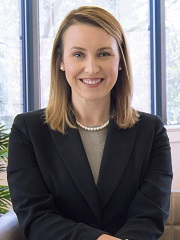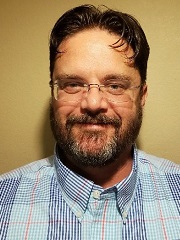How healthcare organizations can advance beyond common analytics traps
One of the biggest questions facing leaders of healthcare organizations is how to effectively deploy an analytics platform. The analytics department at Lakeland Regional Health in central Florida has surmounted many common obstacles while supporting $30 million in organizational gains over the last six years.
Caroline Gay, FHFMA, vice president and chief analytics officer, and Ray Ready, director of analytics, will be at HFMA’s 2019 Annual Conference to present on avoiding analytics-related pitfalls. In the following Q&A, they share some key insights about their department’s operation and how it has evolved since they each started in 2010.
What issues or challenges led Lakeland Regional Health to implement an analytics program?

Caroline Gay (pictured at right): The challenge of compiling data from disparate systems was really the catalyst for Lakeland Regional’s investment in and commitment to an analytics program. In 2011, we implemented a new EHR in our hospital and quickly realized the standard reporting from that system was time-consuming and insufficient for large-scale process improvement projects.
At that time, we had also begun to build an employed physician group through organic growth as well as acquisition. Our ambulatory practices used a different platform. Of course, on top of that we have our billing systems, time and attendance, ERP system — and all of those have valuable data that we need to be able to combine with the other sources.
Our organization recognized that to operate as a true health system, we would need to be able to leverage the data from all of these systems in a more sophisticated way.
What aspects of Lakeland Regional’s analytics model make it effective?

Ray Ready (pictured at right): It all starts with strong executive support that believes that analytics can be a strategic pillar of the organization. Our team follows industry‑standard methodologies for Agile development, like BADIR [business questions, analytics methodology, data insights, recommendations], which helps us derive real business value from these projects.
We use advanced data visualization tools to deliver solutions that zero in on insights and recommendations, rather than just take orders for reports. We’re also included on those improvement projects as participating members, instead of just as a data resource. We get to have equal participation, which helps drive the solution.
How has the analytics program developed over time?
Gay: When we both started, functionally it was just reporting, taking orders for reports and building out data to then push back to customers internally. It has really evolved since then to providing more insights and recommendations, being more of the internal-consultant function.
Organizationally, we have moved from a decentralized analytics model to a centralized model. We’ve pulled together the clinical operations, the financial operations and our ambulatory analysts all into one division. We use the same tools. We follow the same processes so that we have a more streamlined and standard approach.
How has the organization achieved financial benefits in terms of cost savings, revenue optimization and value-based care?
Gay: One way is by sunsetting third-party tools. Our data analysts and developers have been able to partner with business users to create internal projects for budget, productivity monitoring, market-share analysis, physician RVU dashboards and quality-measure reporting. All this has eliminated millions of dollars in annual maintenance fees.
We also work very closely with our finance division. In the fall of 2017, we went live with a new revenue cycle module. Ahead of that implementation, we planned out our data models so the organization would have continuity of financial and statistical information across the two systems. That allowed our revenue cycle executives to navigate what turned out to be a very challenging implementation much more easily and gave them visibility into trends and opportunities for improvement.
In terms of value‑based care, our experience in this space so far has been as part of the CMS voluntary hip-and-knee bundle program that we just concluded last summer.
Our team handled all the data and analysis for the clinical outcomes and financial information on that project. We were able to provide key insights to adjust care pathways in order to reduce costs and improve quality within the Medicare joint population.
What are some common missteps by healthcare organizations in implementing analytics? How did Lakeland Regional overcome these?
Gay: One of the most common mistakes is focusing on the technology first rather than assessing the real value and the total cost of an analytics platform. Sometimes an internal analytics function like we have here at Lakeland Regional is the right way to go, but it takes a full investment from the organization. Buying an analytics platform will work for some other organizations.
You have to assess what’s the best step for your company, depending on where you’re at on your journey. A lot of times, organizations want as much data at their fingertips as possible, when in reality, leaders only need to focus on a few KPIs and prioritize their efforts to what really matters. Otherwise, you run the risk of data becoming a distraction.
Having a culture of analytics, making sure an analytics mindset is infused throughout your organization, is also very important. You can’t have a situation where one person in each department is the numbers person and that’s the only person you can count on for information.
Ready: One way that we overcame these challenges was by instituting strong data governance to address data quality, data literacy and access. We created a center of excellence where we curated focused data sources and enabled the operational areas to access them on their own.
We provide training to our internal customers, individually and in small groups. We also partnered with our vendor to create a local analytics collaborative — we host a group that comes together, both internally and data professionals from other industries in our community, so that we can learn from each other, share ideas and expand our own capabilities.
One last thing that we did was partner with Florida Polytechnic and served as advisers within their analytics program to help shape the curriculum so that we can have a robust pipeline for talent.
What changes or improvements, if any, will you seek to make in your analytics program over the next few years?
Ready: One thing that we’re excited about is being able to move beyond insights and recommendations based on the data that we analyze and instead start to move into predictive and prescriptive analytics.
We’ve just completed an infrastructure upgrade to our data warehouse so that we can enable machine‑learning services directly within the data warehouse. Instead of an analyst producing a model on their local workstation, and that’s the only place it exists, we can now deploy those models into a production environment where they run as new data comes in. The results can be delivered directly to the decision-maker, which completes the life cycle of projects like that.
We’re also planning out an upgrade to our analytics front‑end solution, so that we can take advantage of new features like natural-language querying, where you can essentially have a conversation with the dashboard and it displays what you’re asking it to display.
Instead of having to click around with your mouse in a more technical way, you can type in questions like, “What’s the length of stay on B7?” and it will know that it needs to go into the data source and contextually pull the information for Unit B7, and create a visualization for that.
Gay: Strategically, as we move into value‑based care and population health, our ability to get information about the patient across the care continuum is key. We feel like we’ve set ourselves up to know as much as we can about the patient when they’re in the walls of our hospital or they’re in our physician practices. It’s important that we expand beyond that and capture data beyond just the care given in our health system.
Our analytics program has evolved significantly from basic reporting and dashboarding to providing insights and recommendations. As our organization sets its strategy for the next decade, they’re looking to us for guidance in setting those goals and priorities.
Interviewed for this article:
Caroline Gay, FHFMA, vice president and chief analytics officer, Lakeland Regional Health, Lakeland, Fla.
Ray Ready, director of analytics, Lakeland Regional Health.
Much more on this topic will be available in a presentation at HFMA’s 2019 Annual Conference.





